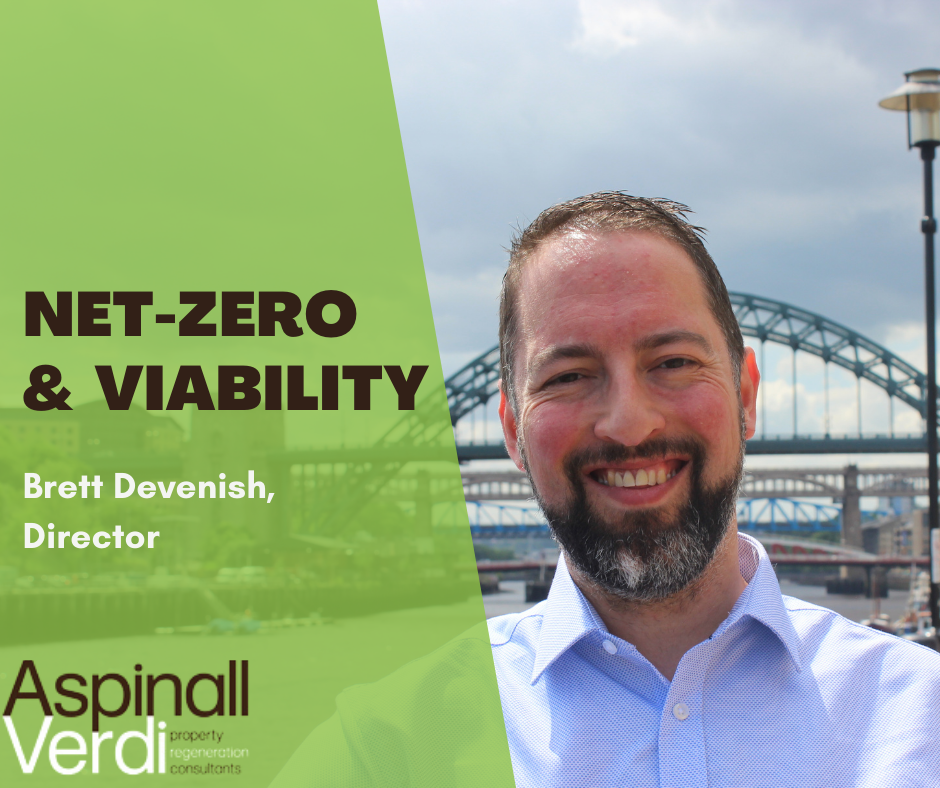News & Blog
Net-Zero and Viability
Posted onJune 14, 2022
Brett Devenish, Director, explains the delivery of net-zero in the context of plan viability
Viability at a plan-wide or site-specific level has always been a contentious topic, as local authorities and developers seek a balance between delivering value for the public through developer contributions while ensuring that schemes are deliverable and financially viable. As commitments and requirements for carbon reduction and net-zero grow, so does the pressure on the margins of viability.
When officers and members set out draft policies, viability is unlikely to be the first thing on their mind. Efforts to meet political aspirations of zero-carbon or deal with declared climate emergencies will drive the initial development of policies, with viability work then taking place to determine whether they can be delivered. In higher-value areas of the country, a surplus may be available that makes all policies viable. In many locations, the impact of the policy will impact viability.
Having determined how much surplus is available to go toward section 106 policies, there is no easy answer in prioritising these policies. Whether it be affordable housing, education, highways improvements or sustainability initiatives, each authority will have a different focus and need.
If viability allows a choice, and if carbon reduction policies are to be taken forward, then a further key discussion point is how to determine which sustainability policies are most effective. We all know that electric charging points, biodiversity net gain and water efficiency measures contribute towards net-zero targets, but do we all understand which of these deliver the best ‘bang for your buck’? At this stage, as technologies are emerging, probably not.
This all implies that it is the public’s role to bear the burden of the viability gap, through reduced benefits such as education or affordable housing, but local authorities generally feel that the responsibility should also fall on landowners and developers. A perpetual viability sticking point is the expectations of the value of landowners’ sites.
Often without an understanding of the intricacies of viability and perhaps expecting a windfall after holding land for decades, they have a price fixed in their mind from previous discussions, and take no heed of the latest policy because this is having the intended effect of capturing more land value for public benefit. Of course, landowners are able to take a longer-term view and hold on to the land indefinitely, until their land value aspirations are met.
Developers are often in a similar position, beholden to minimum profit levels by their funders while dealing with significant cost increases. Shareholders are starting to recognise their ESG responsibilities, but it’s too early to determine whether this translates into acceptance of lower profit levels.
The issue of where the financial responsibility lies in delivering net-zero policies is not an easy one to solve, but ongoing transparent dialogue between local authorities, professional advisers, developers and landowners will give the best opportunity to solve it fairly.
A committed policy environment will also bring forward innovation and solutions that substantially reduce carbon but without significant increases in costs.
